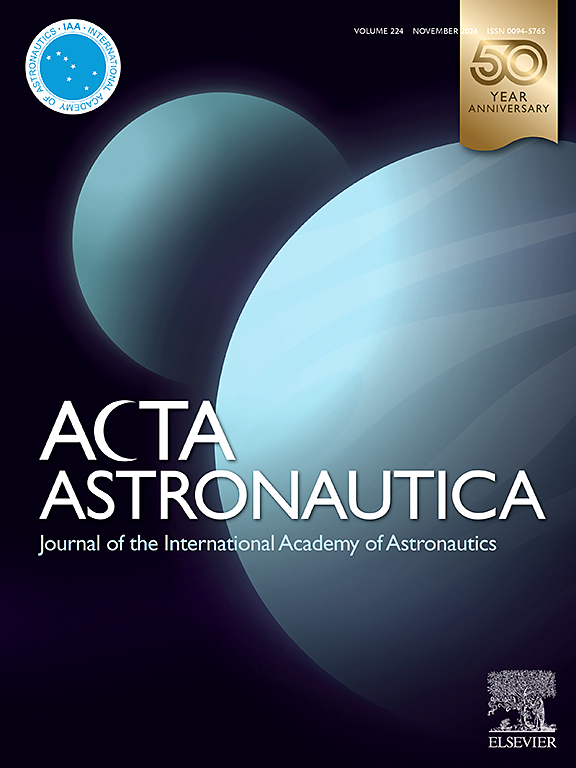Effects of acute hypoxic exposure in extraterrestrial habitats on work performance and biomechanical parameters of manual material handling
IF 3.1
2区 物理与天体物理
Q1 ENGINEERING, AEROSPACE
引用次数: 0
Abstract
NASA has proposed long-duration lunar and Mars habitats operate at 8.0 psia / 32 % O2 atmosphere (the equivalent air altitude [EAA] = 1213 m) nominally with an optional depress to 7.6 psia / 32 % O2 (EAA = 2100 m). To investigate the design extension of atmosphere for emergency scenarios and the biomechanical responses of astronauts performing physical tasks in hypobaric hypoxia, this study analyzed the work performance, upper limb muscles activation and kinematics of ten male participants during repetitive manual material handling (MMH) of 25 kg boxes to fatigue at normobaric normoxia (NN, FiO2 = 20.9 %) and acute hypobaric moderate (MH, FiO2 = 13.6 %) and severe (SH, FiO2 = 11.8 %) hypoxic exposure. The results indicated a significant work performance decrement for per five MMH repetitions at SH (mean ± SD: 76.49 ± 17.47 s) compared to NN (53.09 ± 14.84 s) (P < 0.01). The normalized root mean square (RMS, %MVC) of brachioradialis and erector spinae at fatigue states was significantly higher than those during the starting stage at NN and MH (P < 0.05). The mean power frequency (MPF) of brachioradialis was significantly higher in MH and SH than that in NN (P < 0.01). Both MPF and zero crossing rate (ZCR) of brachioradialis and erector spinae muscles post-MMH were significantly reduced compared to pre-MMH (P < 0.05). Elbow flexion and upper limb acceleration remained unaffected by changes in oxygen levels and fatigue state (P > 0.05). This study provides valuable insights for the design of hypoxic atmospheres in extraterrestrial habitats, as well as for astronaut physical fatigue monitoring and safety protection.
求助全文
约1分钟内获得全文
求助全文
来源期刊

Acta Astronautica
工程技术-工程:宇航
CiteScore
7.20
自引率
22.90%
发文量
599
审稿时长
53 days
期刊介绍:
Acta Astronautica is sponsored by the International Academy of Astronautics. Content is based on original contributions in all fields of basic, engineering, life and social space sciences and of space technology related to:
The peaceful scientific exploration of space,
Its exploitation for human welfare and progress,
Conception, design, development and operation of space-borne and Earth-based systems,
In addition to regular issues, the journal publishes selected proceedings of the annual International Astronautical Congress (IAC), transactions of the IAA and special issues on topics of current interest, such as microgravity, space station technology, geostationary orbits, and space economics. Other subject areas include satellite technology, space transportation and communications, space energy, power and propulsion, astrodynamics, extraterrestrial intelligence and Earth observations.
 求助内容:
求助内容: 应助结果提醒方式:
应助结果提醒方式:


